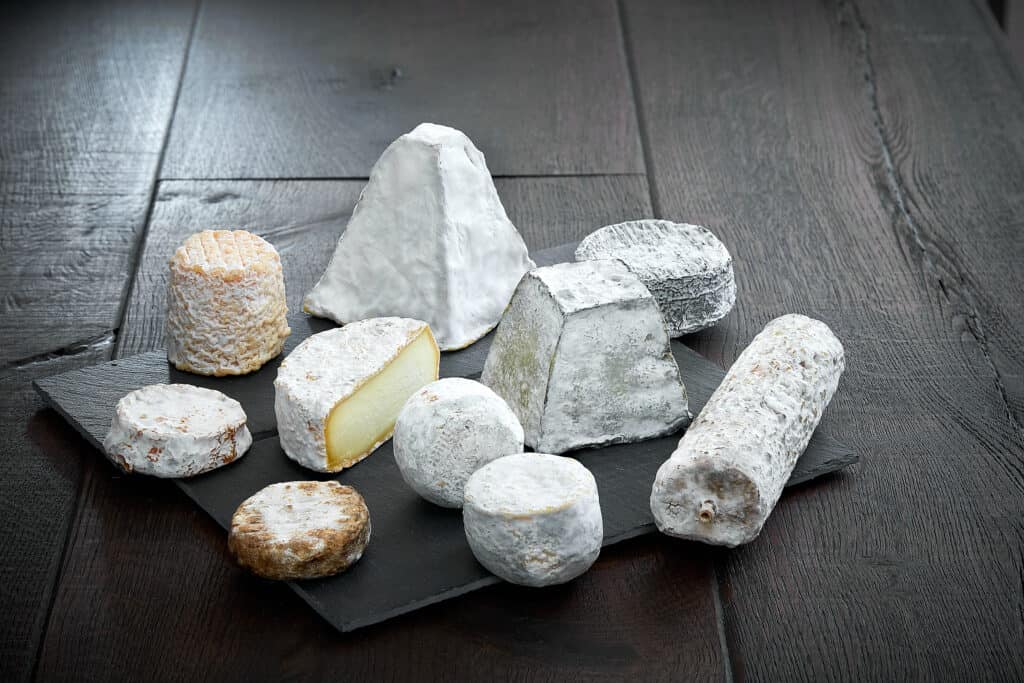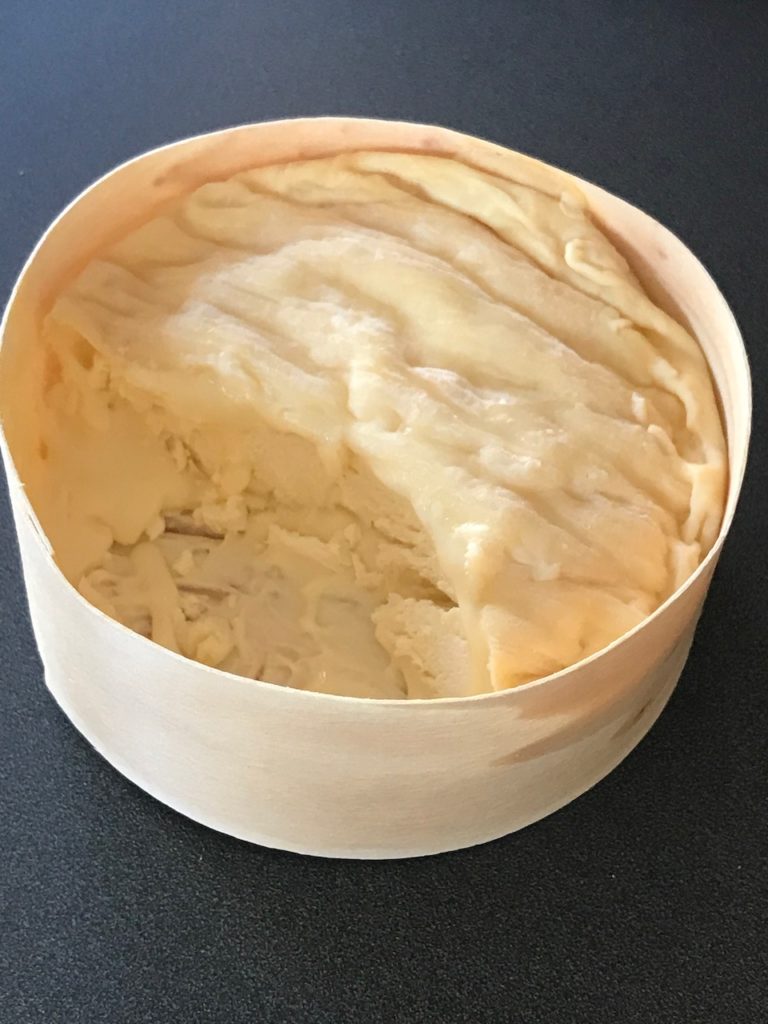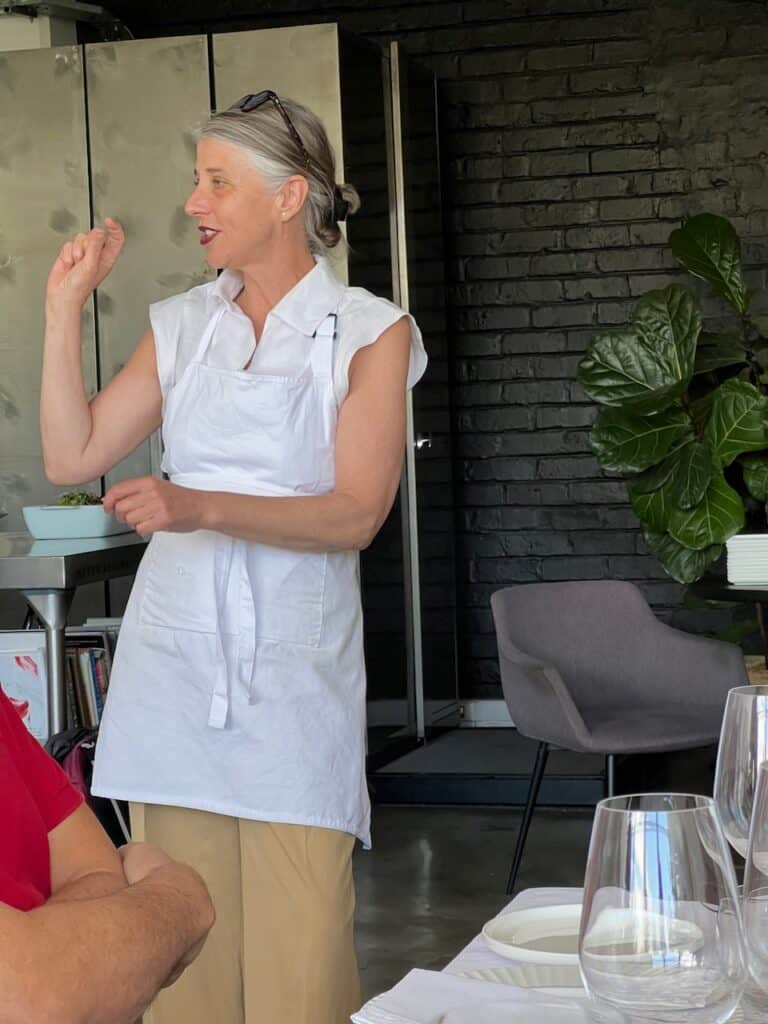Chèvre – a springtime celebration

Spring is almost here, and with it the season for chèvre. Normally, the goats give birth during January, so the kids must of course have their share of the milk, before it is time to make this fine, delicate, pure cheese we know as chèvre. Some have a different season so that the cheeses come out a little later in the spring. In France, among the large dairies, frozen goat’s milk is also used so that they can make cheese all year round. I think part of the charm of food in general and cheese in particular is that for some of the cheeses there is a season. This applies to goat’s cheese and ewe’s milk cheese. Cow’s milk also has a season in a way since a cow generally milks for 10 out of the 12 months of the year. But it is not noticeable because we usually do not have a calving season when it comes to cows, it takes place all year round so that on average about 16% of the livestock is dry. But this last one was now a digression. Well, there is mire to come.
Chèvre – an Arab thing?
Goat cheeses, these good, soft ones that come in all shapes and styles, were initially introduced by Arabs. If I’m not completely wrong, it was the Umayyads. Well, they were defeated during the battles of Poitiers and Tours in 732 under the leadership of the Carolingian Charles Martel. To say that it was the French who defeated the Arabs is at best imprecise, as divided and infiltrated by Romans and Germans as France was. I’m not saying that’s the reason, but it seems like we can find the the reason why France has so many municipalities during the state dissolution that partly happened during the Carolingian “reign”. Enough about that, if it weren’t for the Arabs, it’s not at all certain that we would have had goat cheese. Maybe we would have imported the knowledge from the Middle East, the Umayyad Caliphate was based in Damascus and was one of the largest Islamic empires that has ever existed.
But when they were defeated at the battles of Poitier and Tours, they retreated, leaving everything from goats to cheese making equipment behind. So it was likely that some knowledge had been given to the local population so that they could continue the tradition. This is where the chèvre making tradition hails from. It originally comes from the Middle East just like the Spanish Pata Negra hams, brought to Europe by the Phoenicians. The Phoenicians lived in Phoenicia, an area we know today as Lebanon, as well as southern Syria and the very north of Israel. Phoenicia was also part of Canaan, which also consisted of a number of more or less independent city-states. Since trade eastward was hindered by the mountains, the Phoenicians turned to the sea and became a dominant maritime nation in the Mediterranean with many colonies. One of these was the city of Gades, which we know today as Cádiz, and this is the core area for two things, namely sherry and Pata Negra ham.
Then it’s time to think a little about acidified cheeses versus rennet make cheeses. Acidified cheese are a tradition that belongs to the countries north of the Alps, while using rennet was something the Romans introduced and brought out into the world. That’s for instance why the old Norwegian cheeses gamalost and pultost are acidifies cheeses, as is graukäse, which is an alpine cheese. But that’s where the limit was – further south they used rennet. Just check out Pliny the Elder and Columella, his full name was Lucius Junius Moderatus Columella. He was born in Cádiz in the year 4 AD but emigrated to Rome. He is known for having written the most comprehensive, best-known and best-preserved work on agriculture of the Roman era, Rei rusticae libri XII. Exactly, 12 volumes, one of which deals with cheesemaking and another with the cultivation and production of sherry, how the vineyards should be located and how to grow the grapes and make the wine. And that’s how it is, to this day. More or less anyway.
Now, not all chèvres are necessarily pure lactic cheeses as they also have a tiny bit of rennet added to speed up the coagulation. And that’s how it’s done in Norway too. It takes a while for the cheese to coagulate through acidified. But the fact that it is acidified is long, and you can often feel that in the taste, especially if the cheeses are fresh. Then these cheeses can also be matured, and show off a completely different taste. If you have the opportunity to do so, taste Crottin de Chavignol, from one to up to five to six weeks old, and you will feel the taste and consistency of what the maturation does, week by week. You will probably have to go to Chavignol to get it. Chavignol is a small area in Sancerre in the Loire Valley by the way.
Some selected chèvres
Cathare – aka Le Montesquieu
Shaped like a large flat wheel. From the Carcassonne area in Languedoc, France. Raw milk. Aged for two to three weeks, but also sold quite fresh, at least locally. All cheeses carry the crest of its region. The “occitane” cross is inscribed onto the cheese top. The surface is covered in ash, mixed with a little mold after some time. Looks a bit greyish. Nice aroma and taste of goat, but also hints of nuts. Soft, pale rind, paste that quickly runs away if you leave it for a while on the kitchen counter. Very good Chèvre, also very decorative on any cheese board.
To drink: White and dry. Feel free to try a local one; Marsanne grape, it is rarely wrong.
Crottin de Chavignol
This goat milk cheese is from the Berry area of the Loire. As with most of these cheeses it tastes quite different fresh and ripe. Becomes drier with storage. Most often it is eaten young when it is moist and has a more tender taste than the stored varieties. The taste is more elegant young but with distinct goat flavour. Also possible to get a blue stain mark when it is stored for more than a month. AOP since 1976.
To drink: Sancerre of course. So here is a classic example showing cheese and wine from the same area pairing well.
Rigotte de Condrieu
A raw fermier Chèvre from the Lyon region. The cheese is produced at about 15 farms in the area. Matures up to three weeks and develops a fine bloomy rind during that time. Very pale orange paste. Also available fresh. Then it is white and clean without the a developed rind. A delicate scent of acacia and honey as it goes through maturation. AOC since 2008, named after the village of Condrieu, probably considerably more famous for wine than the cheese.
To drink: Would not dream of drinking anything but Condrieu. I.e. a white wine from northern Rhône made from Viognier grape.
Selles sur Cher
Selles sur Cher comes from the Loire-et-Cher. Manufactured from unpasteurised goat’s milk and covered with ash. Matured for about three weeks, and gray mold develops during maturation. All of the cheese including the rind may very well be eaten. Recommended. This is a medium strong Chèvre with good acidity, taste of ash, some hints of cellar with round and nutty aftertaste. One of the oldest-chèvre cheeses that exist. AOC protection in 1975.
To drink: Here, often whenever there is talk of chèvre, the Sauvignon blanc from the Loire apply.
Valençay
Valençay is a farm manufactured goat cheese from the town of the same name in the Loire. The Berry province. Valençay lies in a straight line south of Orleans. A known area of fresh goat cheese this. Shaped like a pyramid, but the top is cut off. The story has it that it was Napoleon who did this after an unsuccessful campaign to Egypt. So it be. From raw goat’s milk, but there are pasteurised varieties too, so make sure it is au lait cru. Best during spring and early summer but is produced all year round. Has a soft rind that has both mold and covered with a thin layer of ash. Matures for three weeks. Has a great goat flavour. Also hints of earth and with a good acidity. Well suited for grilling, for example, on a toast. AOP since 1998. Learn more about the cheese in this video.
To drink: Sauvignon blanc, preferably Sancerre or Puilly Fumé.
These mentioned, partly because they are good of course, and available, but there are many many others excellent French Chèvres.
Chèvre – a springtime celebration Read Post »



